Ashleigh Wood is a graduate student in the joint Master of Arts in Art History and Museum Studies Certificate program. Ashleigh was awarded a department travel grant to complete research for her Qualifying Paper.
While I am very excited to share my account of my research trip to Washington D.C. earlier this month, I will refrain from sharing too many details about the actual visit to Artechouse as this will be the in-depth topic of my qualifying paper and presentation this fall. This spring, I worked on an independent study with Dr. Jayme Yahr. Titled New Museums and Technology, this independent study served as preliminary research for my Qualifying Paper. Long interested in the topic of the future of museums and the use of technology to create new and immersive experiences, I decided to write on what I am calling an immersive art experience. Artechouse in Washington, D.C. will serve as one of my case studies and after some basic research, I realized the need to visit the space myself, especially given the nature of the art space and the difficulties I would face if writing about an immersive art experience without visiting the site. I decided on the specifics of my topic and crossed my fingers as I applied for the department travel grant. I was fortunate enough to be awarded the grant, and very excited to spend a couple of days in Washington, D.C.
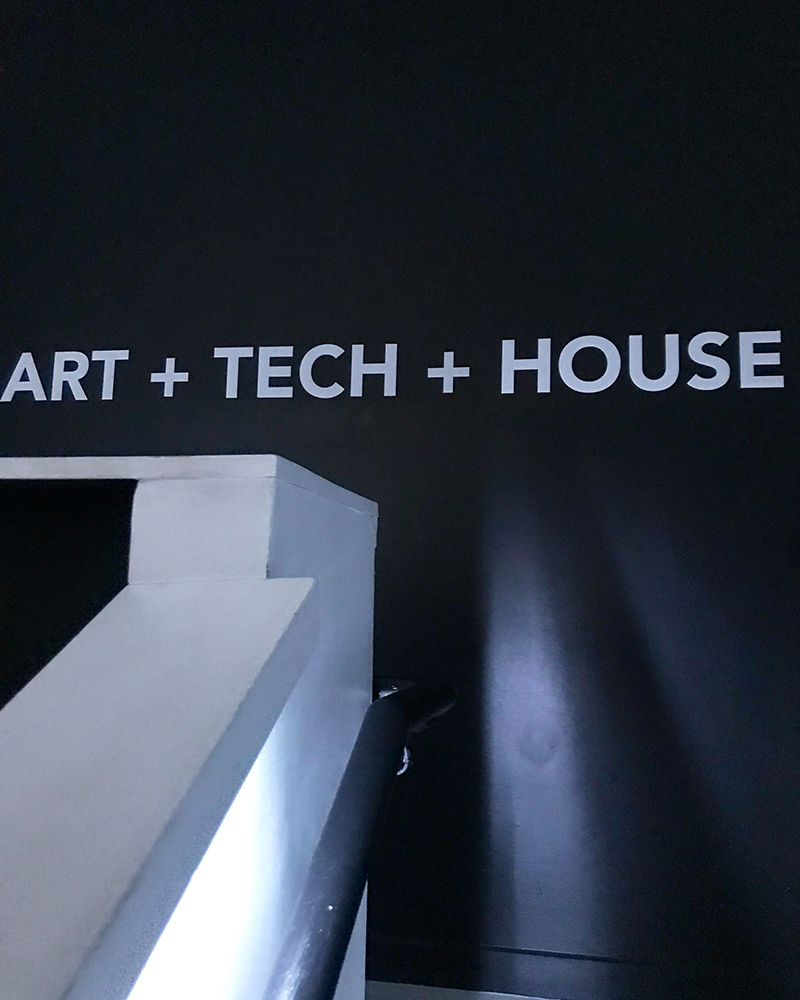
Artechouse Installation
Initially, I expected that my trip to D.C. would take place over the weekend, but after receiving my travel grant and checking online for tickets for Artechouse I was extremely surprised to find that the weekend time slots were completely sold out! This was great considering how many people must be interested in this kind of space, but not so great when considering my availability to travel. Also, the immersive dining experience was unfortunately sold out on all days. I booked two available week day sessions, one for the daytime experience and one for the over 21 drinks experience. I booked a flight, hotel, settled on the idea that the location would be entirely walkable (which proved mostly true), and prepared notes and questions for my visit to the art space.
Having developed a topic before heading to D.C., I was well prepared for the experience, probably more so than the typical museum visitor, and also ready to be critical if necessary. I also anticipated the use of an augmented reality app that would enhance the experience at Artechouse by downloading it before arriving.
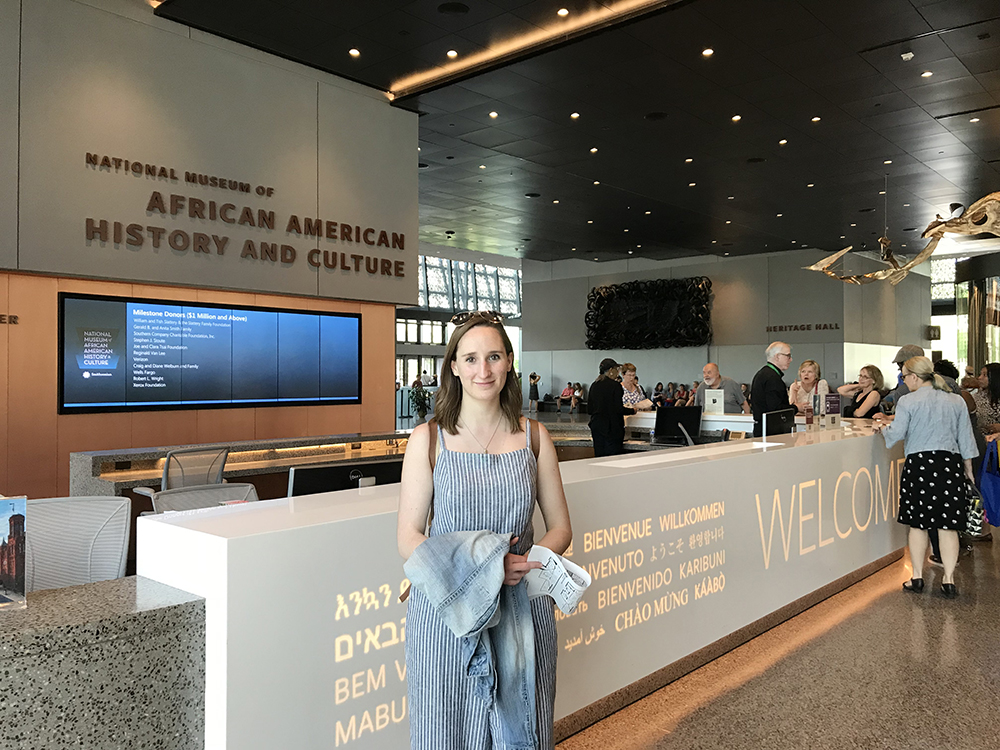
National Museum of African American History and Culture
I arrived in D.C. late on a Thursday evening, navigated my way to the hotel, and woke up early to visit some museums before heading to Artechouse. I paid extra attention to exhibitions that relied on the use of technology and interactive exhibition displays. The National Museum of African American History and Culture was perhaps the most impressive, with so many exhibitions I barely had enough time to wander through them all. Most notable was the educational facility that encouraged children and adults to emulate dancers projected onto a large life-size screen while dancing to the two-step. After visiting this exhibition, I was excited to visit Artechouse, a space dedicated entirely to the immersive art experience.
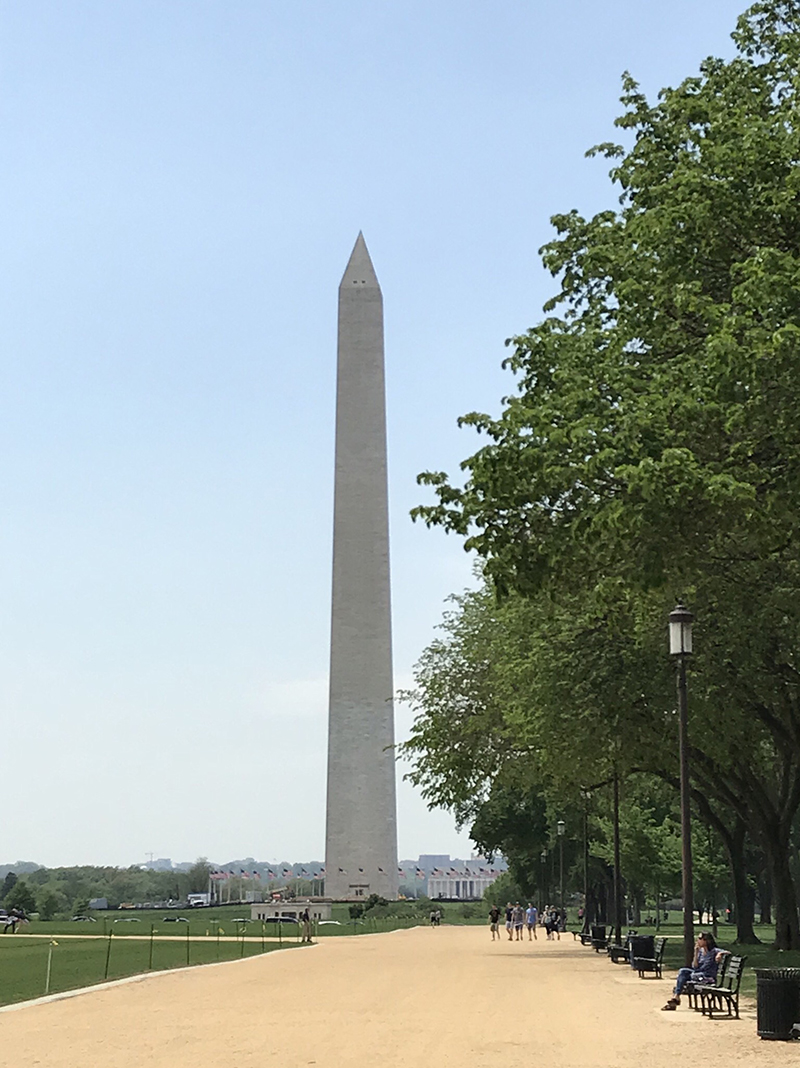
Washington Monument
A ten-minute walk from the Washington Mall landed me in an area of D.C. that was made up of office buildings, hotels, and a single Starbucks. I finally found Artechouse hidden away from street view and entered through a set of sliding doors with the Artechouse logo. On the right was a minimal white desk, two staff, and two iPads where reservations were accessed. A group of individuals scheduled for the 4pm tour gathered and a staff member briefly introduced us to the space, led us down a darkened stairway, and into a lower level meeting area that led into the main art space. We were told what installations contributed to the overall exhibition Sakura Yume (Cherry Blossom Dream). Once briefed, our tour began. I use the word “tour” lightly as we were given free-reign of what spaces we visited and for how long.
The huge introductory gallery was very impressive and fully immersive, just as expected. It was overwhelming, induced emotions of calmness and relaxation, and was really enjoyable. The other installations were equally impressive, despite differing in scale and response to visitor interaction.
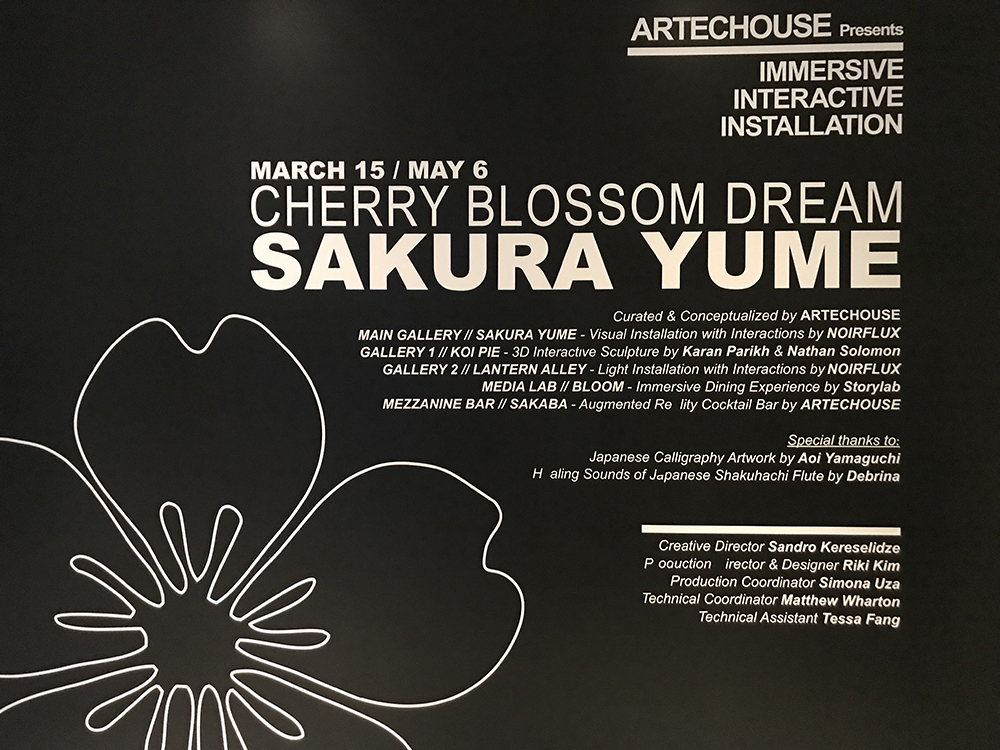
Artechouse Installation, Sakura Yume
In the evening, I returned to the space for a 10pm drinks events where the bar converted into a fully functioning bar with drinks ready for augmented reality activation when placed in front of the app. The whole space felt similar to earlier but was free of children and the pace felt slower and more social.
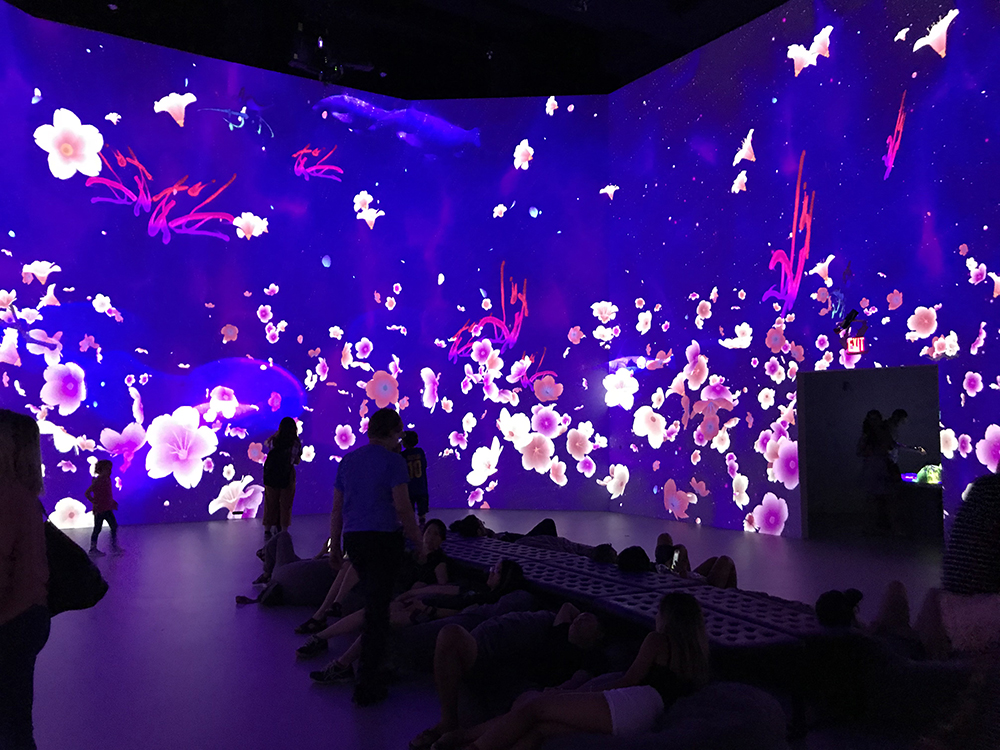
Artechouse Installation, Sakura Yume
The experience was fundamental to my research because despite being prepared for the space, there was an entirely new level of immersion and interactivity that came with experiencing the space firsthand. I am very grateful for the opportunity and believe that this case study, when compared with my other case studies on interactive and immersive art experiences, will prove interesting.